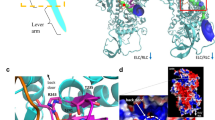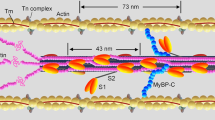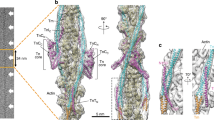Abstract
IT has been previously reported that the synaeresis of actomyosin gels with adenosine triphosphate is accompanied by changes in the X-ray diffraction pattern indicating that some part of the actinmyosin complex undergoes supercontraction1. The recent observation by Goodall2 that one or more protons at each active site are involved in the production of tension in the myofibril is in line with my experiments, which suggest that the supercontraction of myosin (or actomyosin), long postulated as the fundamental basis of muscle contraction3, might also be due primarily to some specific transfer of protons.
This is a preview of subscription content, access via your institution
Access options
Subscribe to this journal
Receive 51 print issues and online access
$199.00 per year
only $3.90 per issue
Buy this article
- Purchase on Springer Link
- Instant access to full article PDF
Prices may be subject to local taxes which are calculated during checkout
Similar content being viewed by others
References
Pautard, F. G.E., Nature, 182, 788 (1958).
Goodall, M. C., Nature, 182, 677 (1958).
See, for example, Astbury, W. T., Proc. Roy. Soc., B, 134, 303 (1947) (Croonian Lecture, 1945).
Dubuisson, M., Arch. Intern. Physiol., 50, 203 (1940).
Author information
Authors and Affiliations
Rights and permissions
About this article
Cite this article
PAUTARD, F. Proton Transfer and Supercontraction in Actomyosin. Nature 183, 1391–1392 (1959). https://doi.org/10.1038/1831391b0
Issue Date:
DOI: https://doi.org/10.1038/1831391b0
This article is cited by
-
Effect ofP CO2, bicarbonate and lactate on the isometric contractions of isolated soleus muscle of the rat
Pfl�gers Archiv European Journal of Physiology (1970)
-
Der Einflu� der H-Ionen auf Elektrolytgehalt, Membranpotential und Kontraktion tonischer und phasischer Skeletmuskeln
Pfl�gers Archiv f�r die Gesamte Physiologie des Menschen und der Tiere (1964)
-
Reversible Supercontraction of β-Keratose
Nature (1960)
Comments
By submitting a comment you agree to abide by our Terms and Community Guidelines. If you find something abusive or that does not comply with our terms or guidelines please flag it as inappropriate.



